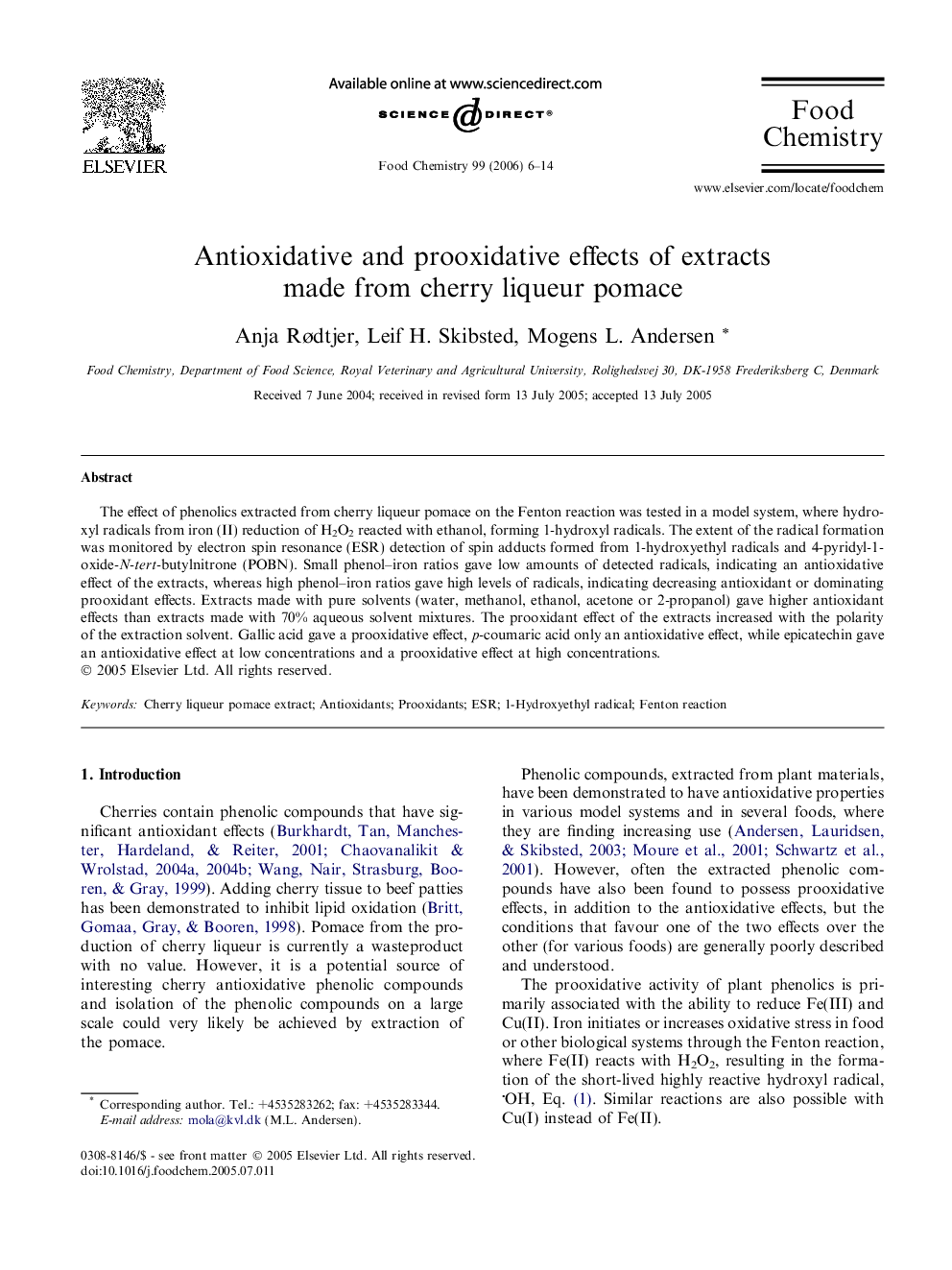| Article ID | Journal | Published Year | Pages | File Type |
|---|---|---|---|---|
| 1191057 | Food Chemistry | 2006 | 9 Pages |
The effect of phenolics extracted from cherry liqueur pomace on the Fenton reaction was tested in a model system, where hydroxyl radicals from iron (II) reduction of H2O2 reacted with ethanol, forming 1-hydroxyl radicals. The extent of the radical formation was monitored by electron spin resonance (ESR) detection of spin adducts formed from 1-hydroxyethyl radicals and 4-pyridyl-1-oxide-N-tert-butylnitrone (POBN). Small phenol–iron ratios gave low amounts of detected radicals, indicating an antioxidative effect of the extracts, whereas high phenol–iron ratios gave high levels of radicals, indicating decreasing antioxidant or dominating prooxidant effects. Extracts made with pure solvents (water, methanol, ethanol, acetone or 2-propanol) gave higher antioxidant effects than extracts made with 70% aqueous solvent mixtures. The prooxidant effect of the extracts increased with the polarity of the extraction solvent. Gallic acid gave a prooxidative effect, p-coumaric acid only an antioxidative effect, while epicatechin gave an antioxidative effect at low concentrations and a prooxidative effect at high concentrations.
